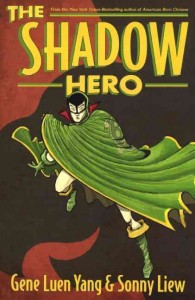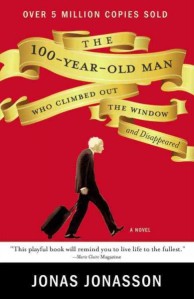 I just closed Descent and can still feel those symptoms of adrenaline: heart racing, shallow breathing, butterflies in my stomach, eyes and ears hyperalert, muscles twitching and ready for fight or flight. Of course, it could be the two pieces of birthday cake I had for dinner, but I’m convinced it’s Tim Johnston’s storytelling.
I just closed Descent and can still feel those symptoms of adrenaline: heart racing, shallow breathing, butterflies in my stomach, eyes and ears hyperalert, muscles twitching and ready for fight or flight. Of course, it could be the two pieces of birthday cake I had for dinner, but I’m convinced it’s Tim Johnston’s storytelling.
The best part is that Johnston manages to pull off two good books at the same time – an intense psychological thriller and an emotionally resonant story about the family that’s left behind when one of its members goes missing.
Caitlin Courtland is a tough competitor, a runner who demands everything of herself; her younger brother Sean is pudgy and shy, overlooked by his peers and her friends. Their parents have lived through personal trauma, undergone difficulties in their marriage, and are returning to a sense of normalcy. The family is on that last golden trip before Caitlin goes to college on a track scholarship. Then Caitlin, trailed by Sean on a bike, goes for a run; the next thing any of them know, Sean is in the hospital, leg shattered and in shock, and Caitlin is gone.
Over the course of the next two years, the Courtland family breaks apart. Sean leaves home in his dad’s truck, traveling the road, taking menial jobs for gas money, and encountering the dark underside of the American character. Angela, the mother, goes back to their home in Wisconsin but is devastated by the loss of her child and the ongoing uncertainty of her fate. Grant, the father, stays on in the little town near Caitlin’s kidnapping in some vain hope that she’ll know he’s close by. He also begins forming tentative relationships–and definite enmities–with people in the community.
We learn in small pieces what became of Caitlin, and what it cost her to save Sean’s life. We also come to admire just how tough she is, and what she could have become had a strange man not come hurtling into her life. But hers is not a happy story, and as the book approaches its ending we see just what kind of person she is.
Johnston uses the story to address not only family issues (and of families other than the Courtlands), but also of the blend of good and bad that exists in (nearly) everyone. That same kind of blending propels Descent to a powerful and emotionally affecting end.
Check the WRL catalog for Descent
 Refreshing and reinventing old superheroes has become somewhat fashionable recently, with rather mixed results. Some characters, like Batman, have seen so many iterations that it is difficult to separate them all, or find new ground to cover without being completely repetitive or utterly discarding canon. One good thing that has come out of this trend is the resurrection of old characters that never caught on, but were worthwhile for one reason or another.
Refreshing and reinventing old superheroes has become somewhat fashionable recently, with rather mixed results. Some characters, like Batman, have seen so many iterations that it is difficult to separate them all, or find new ground to cover without being completely repetitive or utterly discarding canon. One good thing that has come out of this trend is the resurrection of old characters that never caught on, but were worthwhile for one reason or another.
 A lot of admonishments are made about not judging a book by its cover. But as I was browsing our shelves, I came across this dark little volume and was immediately intrigued. Mimicking a dinged up, ink spattered journal, its rather grandiose title The Stuff of Legend was set above the drawing of a stuffed bear. Its face set with a sense of purpose, the bear steps towards the reader as if walking towards its destiny, glancing at the toys behind it with a look of either challenge or warning. It is an arresting image, but despite the ominous subtitle, The Dark, I picked up the book fully expecting the fluffy cuteness of the bear to be the reader’s companion through the story, juxtaposed against whatever low-level gloom the authors threw at the character. After just a few pages I realized I was entirely off base.
A lot of admonishments are made about not judging a book by its cover. But as I was browsing our shelves, I came across this dark little volume and was immediately intrigued. Mimicking a dinged up, ink spattered journal, its rather grandiose title The Stuff of Legend was set above the drawing of a stuffed bear. Its face set with a sense of purpose, the bear steps towards the reader as if walking towards its destiny, glancing at the toys behind it with a look of either challenge or warning. It is an arresting image, but despite the ominous subtitle, The Dark, I picked up the book fully expecting the fluffy cuteness of the bear to be the reader’s companion through the story, juxtaposed against whatever low-level gloom the authors threw at the character. After just a few pages I realized I was entirely off base. While the majority of people are (hopefully) aware of all-black regiments that have fought for America like the Tuskegee Airmen or the Buffalo Soldiers, many do not realize that there were black soldiers who fought in WWI. Highlighting a piece of our nation’s history that has been minimized, ignored, and forgotten, Max Brooks brings the story of the 369th Infantry Regiment roaring back to life. Although the account is fictional, much of the storyline and action comes directly from historical accounts. The amount of research that went into this book is readily apparent and helps ground the story in the mud-laden reality that was life in the trenches.
While the majority of people are (hopefully) aware of all-black regiments that have fought for America like the Tuskegee Airmen or the Buffalo Soldiers, many do not realize that there were black soldiers who fought in WWI. Highlighting a piece of our nation’s history that has been minimized, ignored, and forgotten, Max Brooks brings the story of the 369th Infantry Regiment roaring back to life. Although the account is fictional, much of the storyline and action comes directly from historical accounts. The amount of research that went into this book is readily apparent and helps ground the story in the mud-laden reality that was life in the trenches.


 Mice live in the shadows, overseen by the moon, which they believe is the eye of their god, Wotan. As their legends go, in years past they were protected by a band of fierce warriors, guardians of the night: the Templars. After years of defending as a unified brotherhood, one year, for a reason yet unknown, the Templars were divided and began warring against each other. After the epic battle, no Templars were allegedly ever seen again. Now the mice have mere watchmen guarding them against all the creatures, large and small, who threaten their existence.
Mice live in the shadows, overseen by the moon, which they believe is the eye of their god, Wotan. As their legends go, in years past they were protected by a band of fierce warriors, guardians of the night: the Templars. After years of defending as a unified brotherhood, one year, for a reason yet unknown, the Templars were divided and began warring against each other. After the epic battle, no Templars were allegedly ever seen again. Now the mice have mere watchmen guarding them against all the creatures, large and small, who threaten their existence.








